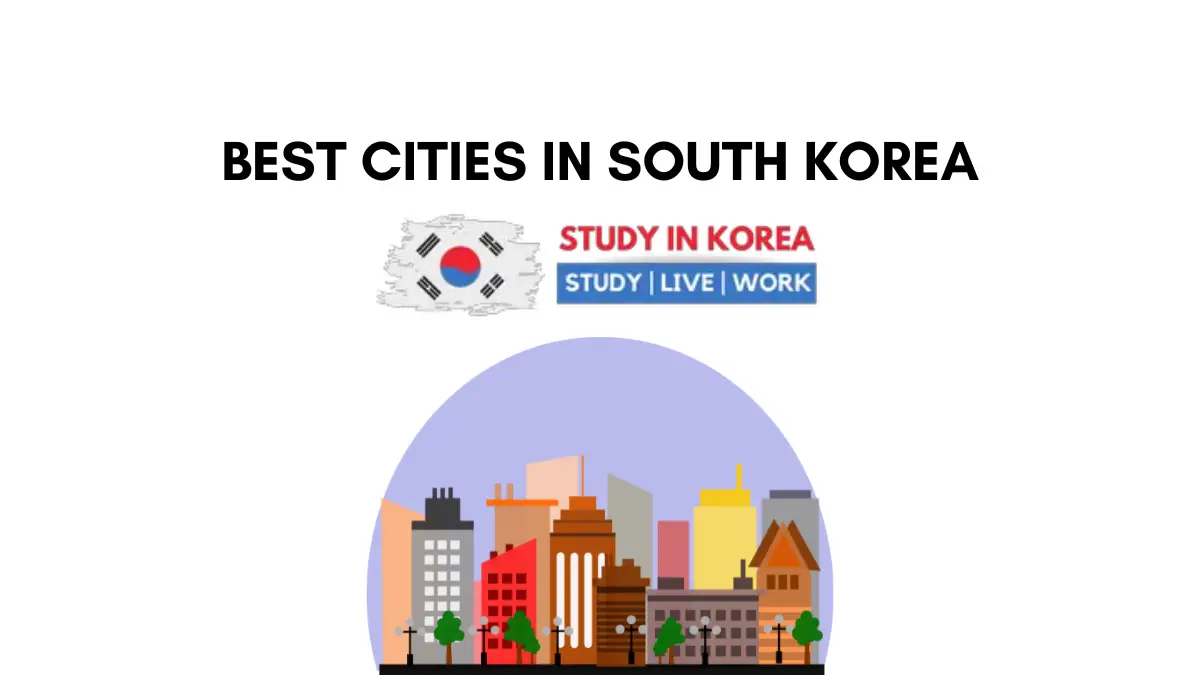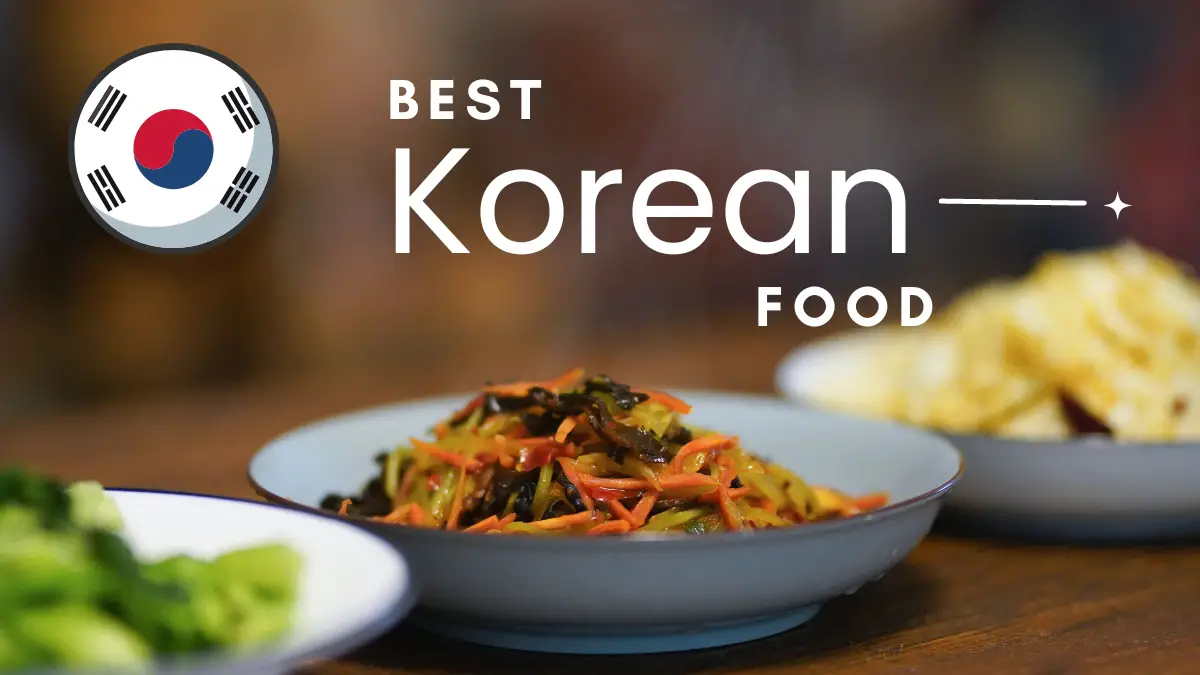
Best Cities in South Korea
South Korea, officially known as the Republic of Korea, is a country located in East Asia. It is situated on the southern half of the Korean Peninsula, bordering North Korea to the north, the Sea of Japan to the east, the Yellow Sea to the west, and the Korea Strait to the south.
With a population of over 51 million people, South Korea is the 27th most populous country in the world. Its capital and largest city is Seoul, which is home to more than 10 million people. Every year more than ten thousand international students come to South Korea for study purposes. Many International funded and fully funded scholarships are also offered to support international students.
Check these latest opportunities:
KNU International Graduate Scholarship
GIST Scholarship in South Korea 2023 | Fully Funded
Yonsei University Scholarship 2023 for International Students
A glimpse of South Korea
South Korea has a highly developed economy and is known for its advanced technology, automotive and electronics industries, as well as its cultural exports such as K-pop and Korean dramas. The country is also a leading producer of steel, ships, and textiles.
South Korea has a rich cultural heritage, with influences from both China and Japan. Its traditional culture includes music, dance, cuisine, and art, as well as religious practices such as Buddhism and Confucianism. The country has also made significant contributions to the fields of science and technology, including in areas such as robotics and nanotechnology.
South Korea has many vibrant and exciting cities to visit, each with its own unique character and attractions. So enjoy your life in South Korea!
Best Cities in South Korea
Here are some of the best cities in South Korea:
Seoul:
As the capital city of South Korea, Seoul is the largest city in the country with a population of over 10 million people. It’s a dynamic city that blends modern skyscrapers, historic landmarks, and bustling streets filled with vendors selling street food, clothing, and souvenirs. Seoul is known for its traditional palaces like Gyeongbokgung and Changdeokgung, as well as modern landmarks like the N Seoul Tower and Lotte World Tower. It’s also a hub for K-pop, fashion, and technology, with shopping districts like Myeongdong and Gangnam.
Some of the top tourist attractions in Seoul include:
-
-
Gyeongbokgung Palace: This historic palace was built in 1395 and served as the main royal palace of the Joseon Dynasty. It features stunning architecture and beautiful gardens.
-
Namsan Tower: Also known as the Seoul Tower, this iconic landmark offers panoramic views of the city from its observation deck. It is especially popular at night when the city lights up.
-
Myeong-dong: This bustling shopping district is known for its fashion boutiques, street food vendors, and lively atmosphere.
-
Bukchon Hanok Village: This traditional Korean village features well-preserved hanok (traditional Korean houses) that date back to the Joseon Dynasty.
-
Changdeokgung Palace: Another historic palace, Changdeokgung was built in 1405 and is a UNESCO World Heritage Site. It is known for its beautiful gardens, including the famous Secret Garden.
-
Hongdae: This trendy neighborhood is popular among young people for its nightlife, street performers, and live music venues.
-
Lotte World: This indoor amusement park is one of the largest in the world and features rides, roller coasters, an aquarium, and more.
-
Busan:
Busan is the second-largest city located on the southern coast. It’s known for its beautiful beaches like Haeundae and Gwangalli, as well as the Busan International Film Festival, held annually in October. Busan also has many cultural attractions like the Jagalchi Fish Market and the Gamcheon Cultural Village, a hillside neighborhood with colorful houses and murals.
Some of the popular tourist attractions in Busan include:
-
Haeundae Beach: This is Busan’s most famous beach and is known for its crystal-clear water and white sand. It is a popular spot for swimming, surfing, and sunbathing.
-
Gamcheon Culture Village: This is a colorful and charming hillside village that is home to many small art galleries, cafes, and shops. It is a great place to explore and take photos.
-
Haedong Yonggungsa Temple: This is a beautiful temple located on a cliff overlooking the sea. It is a popular spot for sightseeing and meditation.
-
Jagalchi Fish Market: This is one of the largest fish markets in South Korea and is a great place to try fresh seafood.
-
Taejongdae Resort Park: This is a natural park located on a cliff overlooking the sea. It is a great place for hiking and enjoying the beautiful scenery.
Busan also has a variety of museums, art galleries, and cultural centers, where visitors can learn about the city’s rich history and culture. The city is also known for its vibrant nightlife and delicious food, including fresh seafood, Korean barbecue, and street food.
Overall, Busan is a great destination for tourists who want to experience South Korean culture, enjoy beautiful scenery, and have fun at the beach.
Jeju:
Jeju Island is a popular vacation spot, known for its natural beauty, hiking trails, and stunning beaches like Hyeopjae and Jungmun. The island is also home to the UNESCO World Heritage-listed Jeju Volcanic Island and Lava Tubes, a network of caves formed by volcanic activity. Jeju is also known for its seafood and unique local cuisine.
Here are some highlights of tourism in Jeju City:
-
Natural attractions: Jeju City boasts a number of natural attractions that draw visitors from around the world. These include Mount Hallasan, the highest mountain in South Korea; Seongsan Ilchulbong, a volcanic cone with a beautiful crater lake; and Jeju Olle Trail, a network of hiking trails that wind through the island’s scenic countryside.
-
Beaches: With its mild climate and crystal-clear waters, Jeju City is a popular beach destination. Some of the most popular beaches include Hyeopjae Beach, Hamdeok Beach, and Jungmun Beach.
-
Culture and history: Jeju City is home to a number of cultural and historical sites, including the Jeju Folk Village Museum, which showcases the island’s traditional way of life; the Haenyeo Museum, which honors the women who dive for seafood in the island’s waters; and the Jeju Teddy Bear Museum, which features exhibits on the history of teddy bears.
-
Food and drink: Jeju City is known for its delicious cuisine, including fresh seafood, black pork, and traditional Korean dishes like bibimbap and kimchi. Visitors can also enjoy locally brewed beer and traditional Jeju liquor made from tangerines.
-
Shopping: Jeju City has a number of shopping areas, including the traditional Jeju Market and the modern Lotte Duty Free Shop. Visitors can find a wide range of souvenirs, from traditional crafts to luxury goods.
Overall, Jeju City offers a unique blend of natural beauty, culture, and history that makes it a must-see destination for anyone visiting South Korea.
Gyeongju:
Gyeongju was once the capital of the ancient Silla dynasty, which ruled from 57 BC to 935 AD. As a result, the city has many historic landmarks like the Bulguksa Temple and Seokguram Grotto, both UNESCO World Heritage Sites. Gyeongju is also home to the Gyeongju National Museum, which has a collection of artifacts from the Silla dynasty.
Some of the most popular tourist attractions in Gyeongju include:
-
Bulguksa Temple – A UNESCO World Heritage Site that dates back to the 8th century and is considered one of the most beautiful Buddhist temples in the world.
-
Seokguram Grotto – Another UNESCO World Heritage Site, it is a 8th-century Buddhist shrine that is famous for its intricate stone carvings.
-
Cheomseongdae Observatory – One of the oldest astronomical observatories in Asia, dating back to the 7th century.
-
Anapji Pond – A beautiful artificial pond built in the 7th century, it was used by the Silla kings for banquets and parties.
-
Tumuli Park – A large park with over 20 royal tombs from the Silla period, including the Cheonmachong Tomb which is open to the public.
-
Gyeongju National Museum – A museum dedicated to the history and culture of the Silla Kingdom, with over 100,000 artifacts on display.
Aside from these attractions, Gyeongju City also has many traditional markets, shops, and restaurants where visitors can sample local cuisine and purchase souvenirs. The city is also known for its beautiful cherry blossoms in the spring, making it a popular destination for tourists during that time of year.
Daegu:
Daegu is known as the fashion and textile capital of South Korea, with a bustling downtown shopping district called Dongseongno. It’s also home to many historic sites like the Daegu Yangnyeongsi Herbal Medicine Market and the Donghwasa Temple. Daegu is also famous for hosting the annual Daegu International Bodypainting Festival, which attracts artists from around the world.
There are many best cities in South Korea such as Daegu City, including historic sites such as the Daegu Yangnyeongsi Museum of Oriental Medicine, the Seomun Market, and the Donghwasa Temple. Visitors can also explore the city’s vibrant arts and culture scene by visiting the Daegu Art Museum, the Daegu Opera House, or the Daegu International Musical Festival.
In addition, Daegu City offers many opportunities for outdoor activities, such as hiking in the Palgongsan Mountain Range or visiting the Apsan Park. The city also has a number of beautiful parks and gardens, such as the Daegu Arboretum and the Duryu Park.
Daegu City is also known for its excellent food scene, featuring a wide range of traditional Korean dishes, as well as international cuisine. The city is famous for its spicy chicken dish called “chimaek,” which is often enjoyed with a cold beer.
These cities are just a few examples of the diverse and fascinating places to visit in South Korea. Each city has its own unique culture, history, and attractions that make it worth exploring.
Share this content:




